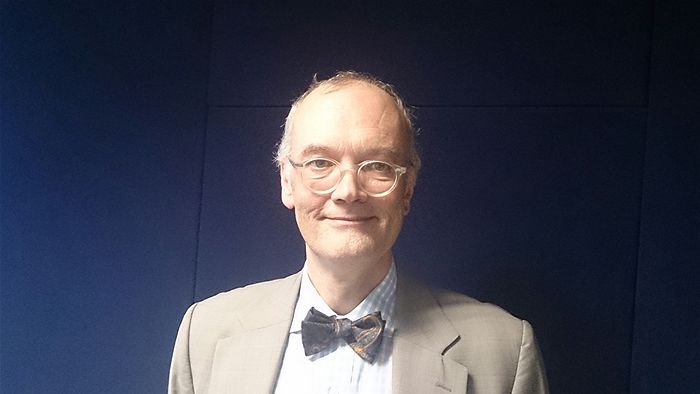Last Saturday morning I agonized over the choice of four songs—four songs only—to take with me to the ABC Studios for my slot on Alex Sloan’s Canberra 666 afternoon program, a sort of iteration of the old BBC Desert Island Discs. She makes it easy because we have a lifelong mutual friend in Alison Inglis, so it is rather like having a friendly natter over a cup of tea in front of a couple of hundred thousand other people.
Working backwards, I thought I should at least try to match each song to important episodes or phases: The Yale Whiffenpoofs of 2003 (I’ll Be Seeing You) would stand for the past decade and also send a warm message to friends in America. Attacking the problem from the other end, Lucienne Boyer (Parlez-moi d’amour) would represent home life with Dad and Mum, and their fondness for le monde du café-concert, but perhaps Charles Trenet (La Mer) might also cover Metung. Which one? That left only two slots for the thirty intervening years. So often particular songs bring back people and places with astounding vividness. I owe my taste for Sophie Tucker (Stay At Home Papa) exclusively to my elder brother Hamish, who so loyally sends me comparable out-of-time tidbits.
The Mamas and the Papas (Go Where You Wanna Go) carries me straight back twenty years to John Wares’s suffocating apartment above the convenience store on the northwest corner of Second Avenue and East Fourth Street, as does Angela Lansbury (It’s Today) in the original cast recording of Mame. That was when I was toiling at the Institute of Fine Arts at NYU, and John was working far longer hours in sales at the midtown branch of Daffy Dan’s Discount Town. It was suffocating because the windows wouldn’t, couldn’t open. Bill Withers (Who Is He, And What Is He To You?), meanwhile, evokes the later stages of bibulous parties chez Richard Grayson and Suzie Treister in Adelaide, because we made our own fun.
But would it do to make such a determinedly retro selection? What about the 1980s, and the Communards (Don’t Leave Me This Way), or The Pet Shop Boys (Always On My Mind), so unwittingly foregrounded at Junior Common Room parties at Trinity, or maybe it wasn’t quite so unwitting? Come to think of it, like almost everything else, nowadays these are retro.
Leaving out the great Maria Callas (Gluck: O malheureuse Iphigénie) is almost perverse, because I was for years, and in many ways remain, so helpless an opera junkie. But her incandescent 1953 duet with Giuseppe di Stefano (Tu qui, Santuzza) from Cavalleria Rusticana is far too long. So is Ljuba Welitsch’s thrilling 1948 recording of the Letter Scene in Onegin, marred only by the fact that she sang it in German.
Should I instead try to fly a more nationally focused flag for the National Portrait Gallery, possibly Joan Sutherland doing Noël Coward (This Is a Changing World)? Or Judith Durham and the Seekers’ (Five Hundred Miles), which always reduces me to tears, especially when I am far from home? I asked my old friend Ben Keith, and he suggested Janet Baker (An die Musik) because apparently some thirty years ago I urged him to go out and buy the record.
Scanning the A, B, and C lists makes me aware of the undeniably camp element, but perhaps that is something I could actually underline—adding a morsel of Barbra here (Don’t Rain On My Parade) or Dusty in Memphis there (I Can’t Make It Alone), and what about Judy (Come Rain Or Come Shine), for heaven’s sake? Or even the Propellerheads with Miss Shirley Bassey (History Repeating). Now there’s a thought: The producer said to make it personal, so I really ought to take them at their word. In the end I supplied six tracks and left it to the producers to choose the four best.
In the end it boiled down to Lucienne Boyer (Parlez-moi d’amour); The Mamas and the Papas (Go Where You Wanna Go); The Yale Whiffenpoofs of 2003 (I’ll Be Seeing You), and Dusty, a.k.a the late and much lamented Miss Mary Isabel Catherine Bernadette O’Brien (I Can’t Make It Alone). We had a lot of fun: Here’s the link (but for copyright reasons they’ve radically abbreviated the music):














